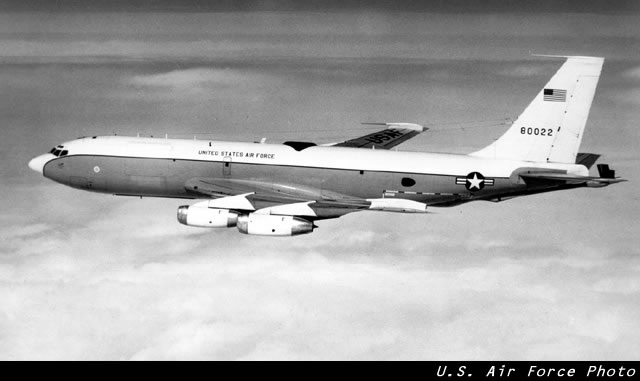|
Home
2ACCS News
History
The
Crew
EC-135 Photos
Links
SAC ACCA
Info
Message Board
Complaints
In Memory
|
The need for a survivable SAC Command Post as a
key component of adequate U.S. deterrence and security meshed well with
the change in U.S. nuclear policy from massive retaliation to flexible
response and its focus upon control of America's nuclear strike force
during the trans- and early post-SIOP periods. The one likely survivable
candidate was an airborne platform, and plans had been under consideration
by SAC since late 1958 to test an airborne command post variant of the
KC-135, with a desired operational capability by 1960.

On May 26, 1960, the first KC-135A (58-0022) began modification to an
airborne command post configuration, and operational tests started two
months later at Offutt AFB, Nebraska. Five modified KC-135As assigned
to the 34th AREFS were placed on ground alert and periodically tested
to determine their ability to take off within 15 minutes. Once airborne,
they would serve as an alternate command post, assuming primary control
over the SAC combat force if (or, more appropriately, when) an enemy attack
destroyed the underground facility at Offutt AFB and the other NAF command
posts. On board each flight was a senior SAC officer (initially a colonel
and eventually a general) - known as the Airborne Emergency Action Officer
(AEAO) - who would take over command of the SIOP forces in the event communications
were lost with the NCA and SAC headquarters.
Next>>
|



